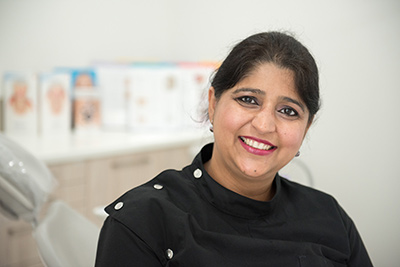Tooth Decay in Young Children: Causes, Signs and Prevention
Cavities are among the most prevalent dental problems in children. It is also called tooth decay which forms a cavity after a tooth gets permanently damaged. Cavities can develop in a child’s baby or primary teeth.
Are you wondering about tooth decay’s causes, signs, and preventive techniques? Then you’ve come to the right place. In this article, we have listed all the known causes of tooth decay. We have disclosed the signs and symptoms of tooth decay. This article will also tell you the best ways to prevent tooth decay in children.
What Causes Tooth Decay in Children?
Tooth decay develops in children due to the accumulation of dental plaque. The dental plaque gradually erodes the tooth enamel, the protective layer around your tooth. This erosion eventually causes a hole to open up in the tooth. Plaque build-up can be easily prevented by regular brushing and flossing. However, children don’t always brush their teeth, which is why tooth decay is more prevalent in youngsters.
Dental experts advise children to brush their teeth at least for 2 minutes, twice a day. Still, many children have a habit of brushing their teeth once a day. Even worse, they may completely forget to brush their teeth sometimes. This is natural as children below six usually need help brushing their teeth. Hence, an adult needs to brush a child’s teeth or supervise them while they brush their teeth.
Apart from this, many children are not in the habit of regularly flossing their teeth. At times, some children often don’t know the correct way to floss. This causes food particles and plaque to get accumulated, eventually resulting in tooth decay. Flossing is also often difficult for kids. So, here too, parents should help them learn the proper way.
Most babies experience teeth growth at around six months old. So, it is recommended to schedule their first visit to the dentist soon after their first tooth is visible.
Still, poor hygiene is one of the reasons for tooth decay. Poor diet also plays a significant role in causing cavities. For instance, children face a greater risk of developing tooth decay if they eat sugary and starchy things too often. Foods that are high in carbohydrates, such as cakes, ice cream, candy, chips, etc., are the types of food that can cause tooth decay in children.
Research studies have shown that some people are genetically vulnerable to tooth decay due to softer tooth enamel.
What are the Signs of Tooth Decay in Children?
Tooth decay may not always be painful. So, recognising the signs of tooth decay is more important than the symptoms.
Some of the commonly seen signs of tooth decay in children include:
- White spots on the tooth
- Dark spots on the tooth
- Irritable or constantly crying
- Mouth swelling
- Sensitivity to cold drinks and food
- Lethargy
- Avoiding food
If you suspect your child has tooth decay, it is recommended to schedule an appointment with a paediatric dentist. The dentist will examine your child’s teeth for signs of decay and recommend the best and most efficient treatment accordingly.
What are the Treatments for Tooth Decay in Children?
Dental drillings are the most common way to treat tooth decay in children and toddlers. This is the right treatment if there are multiple cavities. Dentists can fit fillings on baby teeth and permanent teeth.
The procedure involves removing the damaged portion of the decayed tooth. The large size hole is then filled with a metal or composite material. This treatment option can save and preserve the baby’s tooth.
Saving the tooth is essential because when babies lose their teeth prematurely, this may cause the new teeth to grow improperly. Your baby needs its teeth to chew and speak. Dental drilling is commonly used to treat tooth decay in children as young as 1 or 2 years old.
Dental crowns are another form of treatment for tooth decay in children. This treatment is recommended in case of severe tooth decay. If the decayed tooth is badly damaged or infected, the dentist may suggest removing the tooth entirely. Once the dentist extracts the troublesome tooth, they fill the empty space using a space maintainer. This is helpful for new teeth to grow properly.
Sedation might become necessary in some cases as children tend to get frightened of dental procedures. In such cases, the dentist may use nitrous oxide or laughing gas. They may also inject a local anaesthetic into the child’s gums before extracting the damaged tooth.
How to Prevent Tooth Decay in Children?
Teaching your kids proper oral hygiene and habits is the best way to prevent tooth decay.
Initially, it might feel like you are policing their efforts. However, it’s important to monitor your child closely while they brush and floss their teeth. You should ensure that they learn the proper technique. They should also be aware of the recommended time duration for an effective tooth brushing and flossing routine.
Teach your children to brush their teeth at least twice every day and to floss at least once a day. It is highly recommended to floss before brushing. Also, don’t forget to schedule a dentist’s appointment for your child once every six months.
Infant oral care is also critical. When your baby does not have teeth, their mouths still have germs. In this case, we recommend that you wipe their gums using a soft cloth after each feeding. You can also gently brush their teeth twice a day with a minimal amount of kid-friendly toothpaste.
If your child loves to eat sweets, you can divert them towards healthier alternatives. You can satisfy their cravings and maintain their dental health simultaneously. Some of the healthy options to sweet and starchy junk food include:
- Yoghurt
- Trail mix (with nuts)
- Fruits with low glycemic levels (such as raspberries, blueberries, blackberries, etc.)
- Carrots and dip
- Cheese sticks
- Frozen banana
- Unsweetened applesauce
- Granola bars
- Sugar-less dry fruits
Conclusion
Tooth decay is not limited to adults but is common among children and even toddlers. So, it’s important to identify the early signs of a cavity. This way, you can schedule an appointment with the dentist. Tooth fillings can prevent tooth decay from spreading and work to save your child’s tooth actively. Avoiding starch and sugar-based food can help keep tooth decay at bay for children.
Our Principal Dentist
Dr Teena and the Rouse Hill Smiles team are dedicated to providing patients of all ages with the highest quality of care.

Dr Teena Bali
Dentist
Quick Contacts
- Rouse Hill Plaza G07-G08, 2-4 Aberdour Avenue Rouse Hill, NSW 2155
- enquiries@rousehillsmilesdentalcare.com.au
- (02) 8320 0548








Leave a Reply